Piolets d'Or 2013, the nominations for the 21st edition
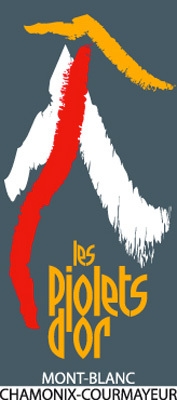
 1 / 13
1 / 13 Piolets d'Or
Piolets d'Or
THE NOMINATED ASCENTS
Kamet (7,756m), India
Kamet is the highest mountain in India for which it is currently possible to gain a permit, and the ca 2,000m southwest face was previously unattempted. After establishing an advanced base in the glacier bowl below this steep mixed wall, Sébastien Bohin, Didier Jourdain, Sébastien Moatti and Sébastien Ratel (France) climbed it, alpine-style, in five days. They found conditions excellent and connected a succession of steep snow fields linked by often vertical ice pitches to reach a bivouac on the south ridge at 7,500m. The summit day presented unexpected difficulties, after which the team descended to the bivouac and next day went down the previously untouched south face.
Shiva (6,142m), India
Elegance summarizes the traverse of this mountain east of Kishtwar, effected via the arrow-like northeast ridge, dubbed the Prow of Shiva, followed by a descent of the south ridge. It was the fifth known ascent of the mountain. Mick Fowler and Paul Ramsden (UK), 2003 recipients of a Piolet d'Or, completed a traverse in a nine-day round trip from base camp, finding sustained climbing on the Prow, which ranged from numerous pitches up icy cracks in Chamonix-style granite to long, protectionless leads on thinly-iced slabs reminiscent of winter climbing on Ben Nevis.
Muztagh Tower (7,284m), Pakistan.
Much discussed, though never previously attempted, the 2,000m northeast spur of this iconic Karakoram peak took Russians Dmitry Golovchenko, Alexander Lange and Sergey Nilov (Russia) 17 days to complete. The three climbed alpine-style but took a large haul bag of food and fuel, a strategy which allowed them to sit out, or persevere slowly through bad weather. The technical crux proved to be the very steep rock barrier between 6,600m and 6,900m. Supplies ran out shortly before they gained the main (east) summit, and in bad weather they were unable to reach the northwest ridge, their planned descent. Instead, they came straight down the north face.
Baintha Brakk (a.k.a The Ogre, 7,285m), Pakistan
The Ogre is one of the most celebrated of the world's mountains yet until last year had been summited only twice, and never from the south, despite many attempts. Kyle Dempster, Hayden Kennedy, and Josh Wharton (USA) chose a cunning line up the southeast ridge to southeast face to south face. Gaining the upper south face involved a steep traverse across complete rubble and, higher, they overcame hard sections of mixed ground. From a bivouac at 6,900m, Dempster and Kennedy reached the summit but then had to make a difficult descent with an unwell Wharton.
Nanga Parbat (8,125m), Western Himalaya, Pakistan
The complete Mazeno Ridge of Nanga Parbat was undoubtedly one of the most famous unclimbed lines on the great peaks of the Karakoram/Himalaya, having been attempted many times, and by some of the world's greatest mountaineers. It is arguably the longest ridge on any of the 8,000m peaks, variously quoted as 10-13km. Veteran Himalayan activists Sandy Allan and Rick Allen (UK), accompanied for much of the way by Cathy O'Dowd (S Africa), Lhakpa Rangdu Sherpa, Lhakpa Zarok Sherpa and Lhakpa Nuru Sherpa (Nepal), took a pragmatic approach to this huge undertaking by acclimatizing on the first section of the ridge, before setting off alpine-style from base camp. They crossed all eight Mazeno summits, and from a bivouac at 7,200m made an unsuccessful attempt on the unclimbed continuation of the ridge direct to the top. At this point all but Allan and Allen gave up and made a difficult descent to the south. The British pair eventually traversed the north flank to the summit and made a difficult descent of the Normal Route on the north flank, reaching the bottom after a traverse lasting 18 days.
Kyashar (6,770m), Nepal
A coveted line, having been the goal of at least seven previous expeditions, the first ascent of the 2,200m south pillar of Kyashar was one of the finest technical alpine-style climbs in Nepal last autumn. Tatsuya Aoki, Yasuhiro Hanatani and Hiroyoshi Manome (Japan) took six days to climb this elegant line to the summit, making only the second known ascent of the mountain. A crux section of ridge on the fifth day was deemed irreversible, adding to the commitment. The three descended the west ridge with one further bivouac.
JURY 2013
Stephen Venables
Stephan Venables is a 58-year-old British alpinist who is considered a theorist of alpine-style climbing, which he helped popularize through his book “Himalaya Alpine-Style” (Arthaud, 1996, with Andy Fanshawe), and which in turn inspired numerous alpinists. In 1988, together with Robert Anderson, Ed Webster and Paul Teare, he completed his most famous ascent, the Kangshung face to the south col of Everest, which is considered difficult and dangerous. After reaching the south col at 8,000m, Stephen went on to reach the summit of Everest on his own after an incredible ascent and without bottled oxygen, which was a rare thing at that time and still remains exceptional. Stephan has been on numerous expeditions: Hindu Kush (Afghanistan/Pakistan, 1977), Kishtwar Shivling (India, 1983), Solu Tower (Pakistan, 1987), Kusum Kanguru (Nepal, 1991), Panch Chuli V (India, 1992). He also climbed in Peru, Bolivia, Patagonia and South Georgia. He authored books and documentaries and was the President of the Alpine Club. He is the President of the jury of the 21st Piolets d’Or, seven years after having endorsed this same role, which honoured American alpinists Steve House and Vince Anderson for their remarkable ascent of the Rupal face on Nanga Parbat.
Gerlinde Kaltenbrunner
Gerline Kaltenbrunner is the first woman to have climbed all the 14 8,000m peaks in the Himalayas without oxygen, sometimes by ascending difficult routes, but mostly with small teams. She climbed the north ridge of K2 in august 2011 to complete this challenge, together with Pole Darek Zaluski and Kazakhs Maxut Zumayev and Vassiliy Pivtsov. This 41-year-old Austrian alpinist recently did an alpine-style ascent of Nuptse (7861m, Nepal), where she repeated, over the course of four days, the Bettembourg-Hall-Rouse-Scott route with German alpinist David Göttler. After focusing on climbing the 14 highest summits on the planet for the past 12 years, Kaltenbrunner is now applying her alpine-style ethic to lesser-known summits in the Himalayas.
Silvo Karo
52 years old, is one of the best Slovenian alpinists. He has solved some of the great alpine “problems”, such as Bhagirathi III (India, Garhwal, 1990). In 1986, together with his Slovenian friends, he opened a new route on the East face of Cerro Torre in Patagonia, called The Directissima to Hell. He has been very active in this south part of the Andes, where he did a first ascent on Torre Egger and on Fitz Roy. With Rolando Garibotti, he experimented with the non-stop style of climbing by doing a 30hour push up the Slovak route on the southwest face of Fitz Roy. In 2005, he climbed the southeast ridge of Cerro Torre, which starts by ascending the Aguje Medialuna: 1700m of climbing. In Pakistan in 2006, he climbed Eternal Flame on Trango (Pakistan) in a day. Silvo is a particularly fast climber with a long and prolific career. He is also an activist for the mountains through Mountain Wilderness. He was a member of the jury of the Piolets d’Or in 2006, under Stephen Venables’ presidency.
Katsutaka Yokoyama
Katsutaka “Jumbo” Yokoyama is a 31-year-old Japanese alpinist who has distinguished himself on many occasions on mountains all over the world: Bolivia, Alaska, Canada and most recently, Patagonia. Several of his ascents, notably with his compatriots Yasushi Okada – 1st of the southeast face of mount Logan (5900m, Canada), I-To route, 2010 – or with Fumitaka Ichimura and Yusuke Sato – link up on Denali (6,194m, Alaska) of the Isis Face, Ramp on the descent and Slovak route, 2008 – were praised by their peers. They were awarded a Piolet d’Or from Greg Child who was the president of the Jury that year. Katsutaka is a keen supporter of alpine-style ascents; together with his friends listed above, he personifies this ethic, where commitment and the sparing use of resources are rules.
| www | |
| www.pioletsdor.com | |



 Copia link
Copia link

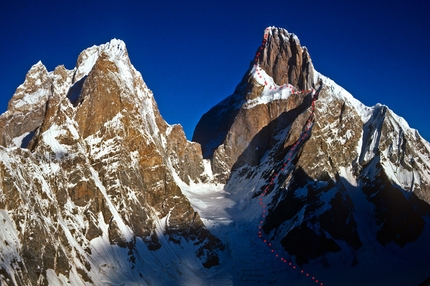
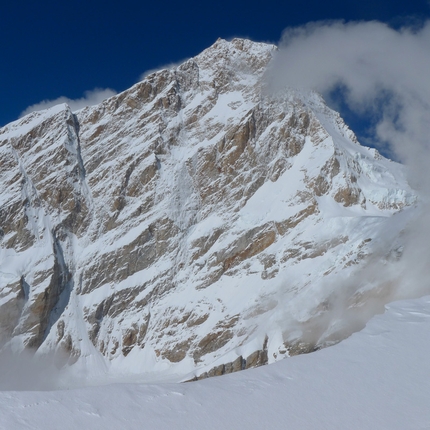
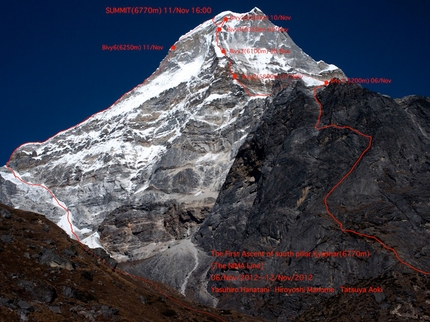
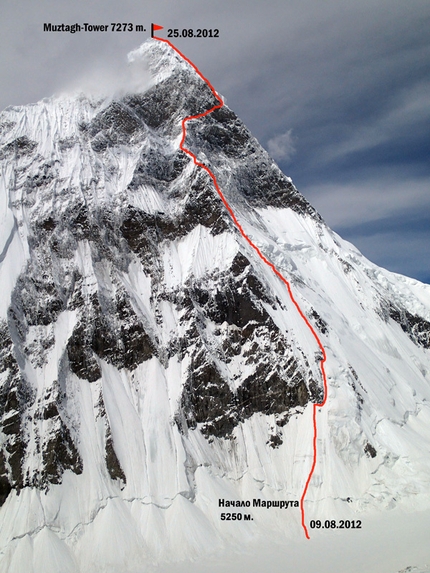
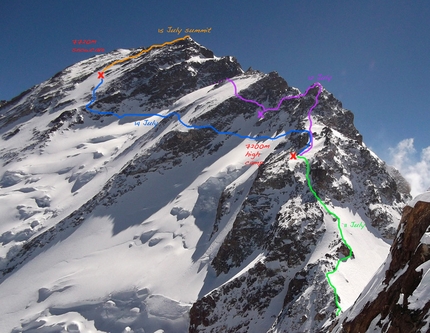
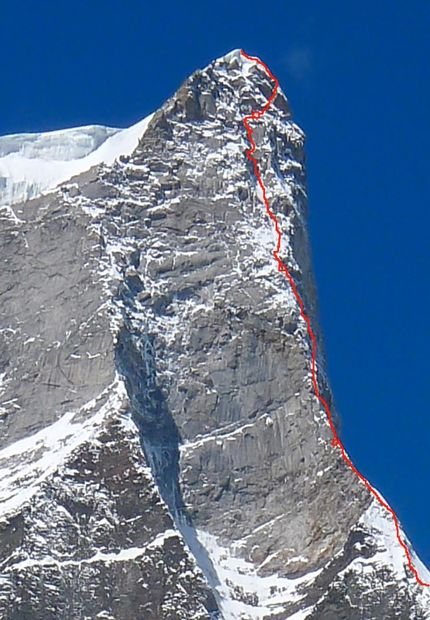
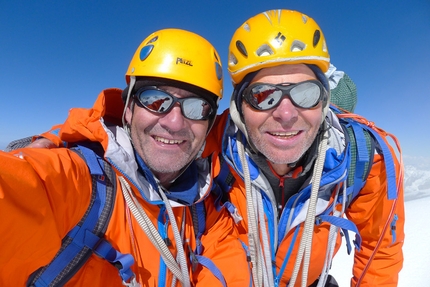
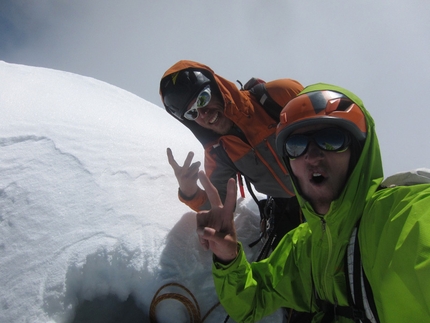
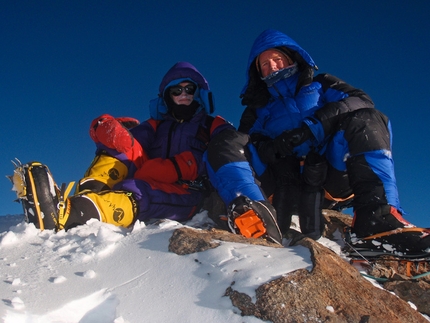
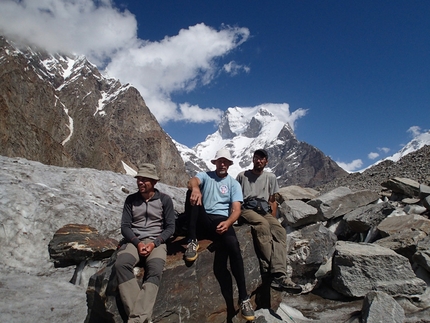
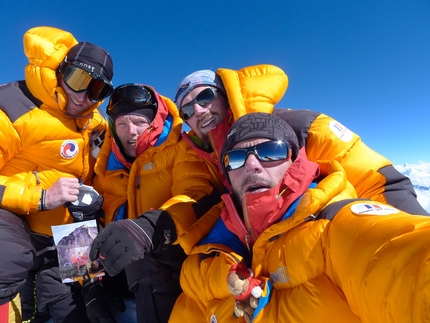
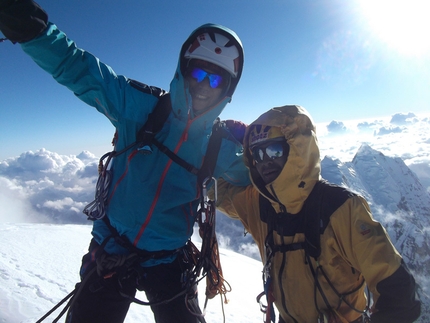
 See all photos
See all photos






















